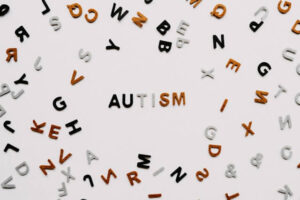Autism is a neurodevelopmental disorder that affects social interaction, communication, interests, and behavior. But for autistic people, it’s more than just a deficit; it’s a different way of experiencing the world. One of the most intriguing aspects of autism is the tendency towards being visual thinkers, a cognitive process through which individuals understand and interpret the world around them predominantly through images and spatial reasoning.
What is Visual Thinking?
Visual-spatial thinking involves using visual images to solve problems, create new ideas, and understand complex concepts. This can include anything from remembering routes, organizing objects, using visual tools, and solving puzzles to complex processes like creating abstract concepts or innovative ideas.
History of Visual Thinking and Autism Spectrum Disorder
The history of visual thinking in relation to autism is as fascinating as it is complex. Renowned scientist and autism spokesperson, Dr. Temple Grandin, brought widespread attention to the concept in the late 20th century, describing her own mind as ‘thinking in pictures.’ This anecdotal evidence sparked interest and further research, leading to a broader understanding that many individuals on the autism spectrum possess a unique cognitive style, favoring visual over verbal processing.
Historical analyses reveal that this visual cognitive style is not a new phenomenon among autistic individuals; however, its recognition and the subsequent shift in educational and therapeutic approaches to harness this strength represent a significant advancement in the field. This evolution reflects a deeper understanding of autism, moving beyond the deficit-focused models to a more nuanced appreciation of neurodiversity and the unique skills and perspectives autistic individuals bring.
Visual Thinking in Autistic Individuals
In people with autism, visual thinking often takes precedence over verbal processing. Research by Nancy Minshew and her colleagues has shown that in people with autism, word-based tasks are processed in the visual parts of the brain. This suggests that the autistic person’s brain may be wired differently, allowing for this unique form of cognitive processing.
Temple Grandin, a renowned scientist, and autism advocate, who herself is autistic, is a prime example of a visual thinker. She has often described her thinking process as “thinking in pictures,” emphasizing that her thoughts are like a series of images, rather than words or concepts.
The Power and Challenges of Visual Thinking in Autism
Visual thinkers are typically creative and hyper-visual, processing information in a detailed and intricate manner. They often excel in fields that require spatial reasoning, pattern recognition, lack visual skills and innovative thinking. However, our society and education systems are often not set up to accommodate these unique ways of thinking.
As Grandin points out, many aspects of our society are not conducive to visual thinkers, which can lead to them feeling marginalized or misunderstood. Traditional education systems, for example, often favor verbal and linear thinking over the visual skills and spatial reasoning.
Embracing Visual Thinking in Autism
It’s important to recognize and embrace the different thinking styles in autism. As the saying goes, “Great minds don’t all think alike,” and this couldn’t be truer in the case of autism. By understanding and accommodating these unique cognitive processes, we can create a more inclusive society that values neurodiversity.
Temple Grandin’s work has been instrumental in highlighting the power of visual thinking and advocating for the recognition of this unique cognitive process in education and other societal structures.
Incorporating Visual Thinking into Your Child with Autism’s Daily Life
Incorporating visual thinking into daily life can significantly benefit children with autism, leveraging their natural inclinations towards visual-spatial processing to enhance learning and communication. Here are practical ways to do this:
- Use Visual Schedules and Timers: Create visual schedules to outline the day’s activities. This can help children understand what to expect and reduce anxiety about transitions. Visual timers can also assist in managing time for specific tasks.
- Implement Visual Aids: Flashcards, pictograms, and visual aids can be powerful tools for teaching new concepts, building vocabulary, and improving communication skills.
- Encourage Creative Visual Projects: Engage your child in activities like drawing, painting, and building models. These projects cater to their strengths in visual-spatial reasoning and can be a source of joy and self-expression.
- Introduce Educational Software and Apps: Many apps and computer programs are designed with visual learners in mind, using interactive and graphical approaches to teach various subjects, from language arts to math.
- Create a Visual Work Environment: Organize learning and play areas with clearly labeled bins and use visual cues to delineate different spaces. This structured environment can help your child navigate their physical space more comfortably.
By emphasizing visual methods in teaching and daily routines, parents and educators can create a supportive and effective learning environment that capitalizes on the unique strengths of children with autism.
In conclusion, visual thinking is a powerful cognitive process common in individuals with autism. By understanding and embracing this unique way of thinking, we can foster a more inclusive society that celebrates neurodiversity in all its forms.

































